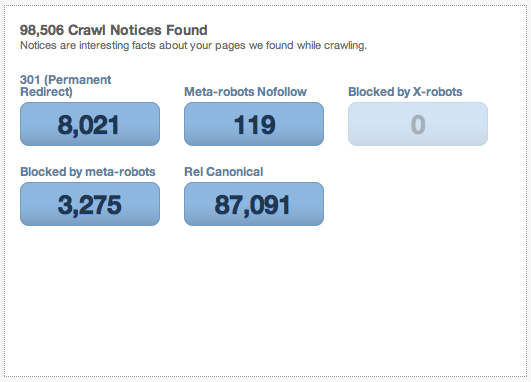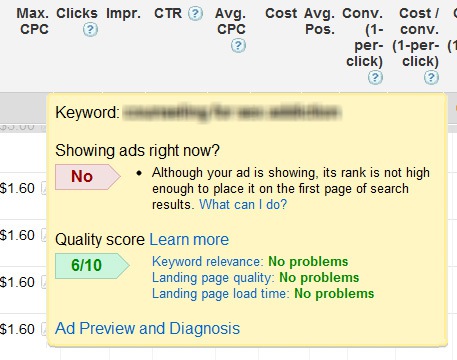Here is a list of the top 15 things every
e-commerce owner/marketer should do after launching their new site. I am not including anything like keyword research, competitive analysis, on-site SEO, creating unique/keyword rich content, or anything else that is generally done before a site is launched. With that being said, here are the top 15…
1. Create a sitemap.xml file (and robots.txt file)
- This will get your newly created site indexed by the search engines. You can choose to link to the sitemap directly from your website, or you can opt to upload your sitemap using Google Webmaster Tools, Bing Webmaster Central, and Yahoo Site Explorer. There are a number of sites online that will create a free sitemap for you (as long as your site in under a certain number of pages).
*Note – you may also want to set up a robots.txt file to disallow certain search engines from indexing unwanted pages in your site. This is used to eliminate duplicate content, preserve “crawl space” (as I like to call it), and keep unwanted pages out of the index (such as your shopping cart page).
2. Set-up product feeds
- Setting up well optimized product feeds can be tedious at first, but it is well worth the effort. The data feed can then be submitted for free to various places such as Google, MSN Shopping, TheFind, Price.com, myTriggers.com, & PriceSCAN. There are also paid services that operate on CPC and % based pricing structures. Data feeds will earn you more traffic and resulting sales. There is no good reason not to have one submitted to all of the free outlets.
3. Submit to DMOZ and other free niche directories
- The Open Directory Project or DMOZ is one of the best free links you can receive. Every new site (e-commerce or other) should submit their site to DMOZ upon launch. Due to the incredibly large amount of entries, it may take a while (months) for your site to be included. Be patient, high quality sites are often included. If you operate as a micro site or an affiliate site – well then try your luck somewhere else.
- There are usually also a number of niche directories you will be able to submit your e-commerce site to. If it is well designed and visually appealing, submit to any number of CSS galleries and directories. If you sell Bar Mitzvah cards, try submitting to Jewish directories. Get creative with your searches and you should find some easy, free, and relevant directories well worth your time and effort to submit to like
www.perfectwebdirectory.info,
directory.freewebsitelist.com etc.
*Note – Don’t forget to submit to free local directories!
4. Sign up for Google Analytics
- Google analytics is a no brainer for any website, e-commerce or not. It is completely free to use and is a very capable analytics program – sufficient for most of the sites online. All you need is a Gmail address and then place the analytics code on your site, and you are good to go.
*Note – Do not forget to set-up goals and conversion funnels. Also remember to filter out your own IP address and the IP address of anyone else that works on the site. Last, you may want to take advantage of one of the newer features and install page load time tracking.
5. 301 Redirect your various homepage URLs to be consistent
- While this may seem like a small tweak, it can actually be the difference between your site ranking on the 1st page or the 4th. If your site URL is
http://www.perfectwebdirectory.info but you also have
http://perfectwebdirectory.info (along with other variations like /index.htm) you are creating duplicate content & spreading your link juice across multiple URLs. It’s standard practice to use a 301 redirect to consolidate all of these pages to one URL. Whichever version you choose is up to your discretion.
6. Sign up for Google Webmaster Tools & Webmaster Central
- This step is incredibly simple, and it can provide you with a variety of useful data points that will allow you to manage your site more effectively. You will be able to track backlinks, organic search clicks/impressions/CTR, average site load time, html errors, most important keywords, and much more. All you have to do is register your site and verify using one of the various methods. I suggest verifying through meta-tags or uploading a file to your server. It’s incredibly simple, yet incredibly useful. You may also wish to set up an account with Bing Webmaster Central – the Microsoft version of Google Webmaster Tools.
*Note – Don’t forget to set your preferred domain, as well as your geographic targets.
7. Send out a press release
- Sending out a press release is another must. A simple introduction of your company, what you sell, what makes you unique, etc is all it will take. While you can pay a lot of money to have this press release distributed, there are also a large number of free sites that will let you distribute for free (and some even let you include backlinks). Some of the most popular are PR.com, PRlog.org, OpenPR.com, Free-Press-Release.com, 1888PressRelease.com, i-Newswire.com, 24-7PressRelease.com, TheOpenPress.com,
submissionsvalley.com, PRUrgent.com,
pressreleaseprint.com, PressMethod.com, & of course eCommWire.com.
8. Start a free blog
- Blogging is a great way to engage your audience, establish yourself as an authority in your industry, network, and build quality backlinks. Use a free platform like Blogger or WordPress and you can have a company blog started in less than 30 minutes. You can also pay to have the blog hosted on your domain – either way, it’s up to you.
*Note – Don’t forget to set up an RSS feed for your blog!
9. Create social media accounts
- Nowadays it seems every business in every industry has social media accounts. While not every industry truly needs to be on Facebook, every e-commerce website should be. Create social media accounts on the big 3 – Facebook, Twitter, & LinkedIn. You may also want to create accounts on Youtube, Quora, Flickr, MySpace, Scribd, or any number of other social media sites related to your niche. For example, a retailer of baby products would want to make an account on CafeMom. Use your best judgment to determine which accounts are worth your time, and which aren’t. There’s no point of creating an account if you aren’t going to participate in the community and keep your information current.
10. Create social bookmarking accounts and start bookmarking your most important pages
- Social bookmarking is a great way to gain traffic and backlinks. While the links are not as authoritative as other sources, they will get your site indexed quicker and they are a great starting point for any e-commerce site that has just launched. The major players are Reddit, Digg, Delicious, Folkd, Fark, Diigo, Slashdot, & StumbleUpon. Wists, Kadooble, Fancy, & Nuji are also great social shopping sites that allow you to bookmark your products and gain traffic/backlinks. There are thousands more sites for social bookmarking, but unless you have an unlimited amount of time and resources to dedicate to this – I suggest you stick with the big ones and actively participate. It’s better to have a few social bookmarking accounts that carry weight, than hundreds that are neglected.
11. Sign up for HARO
- HARO (or Help a Reporter Out) is one of, if not the best place online for free PR. It’s a completely free subscription based service consisting of 3 day emails loaded with queries from various media outlets. It’s made up of journalists and bloggers looking for expert opinions, stories, and products. It’s a no brainer for any e-commerce site. You have the opportunity to earn media coverage on a wide variety of outlets – from the largest to the relatively small.
*Note – There are similar, yet smaller, services that virtually mimic HARO – Reporter Connection, Pitch Rate, & Flacklist (think Facebook meets HARO), just to name a few. They are all free and definitely worth your time.
12. Set up Google Alerts to monitor brand mentions (& competitors)
- Setting up Google Alerts is simple as can be. Visit google.com/alerts and type in the terms that you want to be notified of as soon as they are included in any new indexed web pages. This is great to monitor brand mentions – not just your own, but also those of your competition. It’s also great for monitoring your most important keywords. You may find new opportunities or inspiration relatively quickly. Best of all, its free, and you don’t even need a Gmail account to use it.
13. Take advantage of $75 of free Google Adwords coupons
- There are many reasons for e-commerce site to try Google Adwords at least once. It can give you a better idea of the actual search volume of specific keywords, it lets you know which keywords your site performs best for, it lets you test different ad copy/promotions/landing pages/and marketing messages, and you can get $75 credit free when starting a new account! There’s no good reason not to give it a shot…
14. Sign up for and/or verify your local search pages
- If you are an
E-commerce site with an actual brick and mortar storefront, you should be claiming and verifying your local search pages. Google Places, Yelp, Yellowpages, CitySearch, SuperPages, InsiderPages, Merchant Circle, Bing Local, and Yahoo Local are the first places to optimize for. Local search is a completely different animal…but signing up for and verifying your place pages is the first step to gaining additional, local traffic.
15. Inform all of your contacts about your new site
- This one seems like a no brainer, but you would be surprised how many people simply forget to utilize their existing database to help spread the word about their new business. You can choose to use email, phone calls, or traditional mail.
*Note – Don’t forget to link to your website and any relevant social accounts in all of your email signatures from launch date onward.
These last tactics were so close…but didn’t make the cut. – Either because they were too advanced for the normal e-commerce site owner, not a large enough priority after an initial site launch, take too long to become effective, require too many resources, or because they are not entirely necessary for operating a successful e-commerce site. There were also many other ways to market your new e-commerce site that were not included, simply because they cost money.
- Register for an affiliate program (a free one)
- Blog comments and Q&A site participation
- Download free SEO toolbars for Firefox
- Article marketing
- Guest Blogging
- Link request emails
- Competitor link theft
- Giveaways, donations and product reviews
- Link bait
- Forum participation
- Submissions to general directories
- Creation of a press list and contact of all the bloggers/journalists in your niche
Hopefully all you e-commerce people out there have already knocked most of the items off of this list…and if you haven’t – what are you waiting for? The sooner you get going, the sooner you start increasing traffic and start making more money.
















